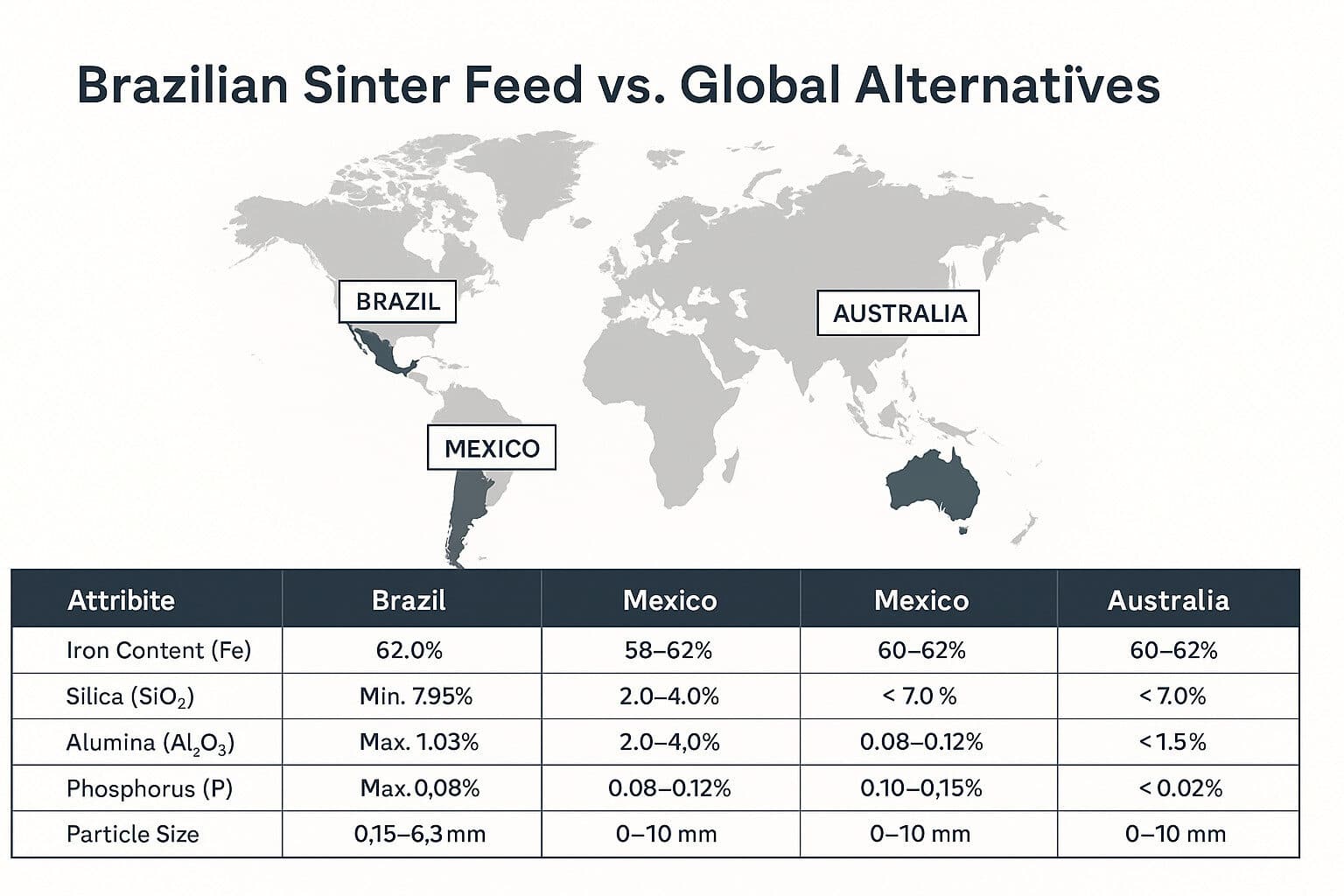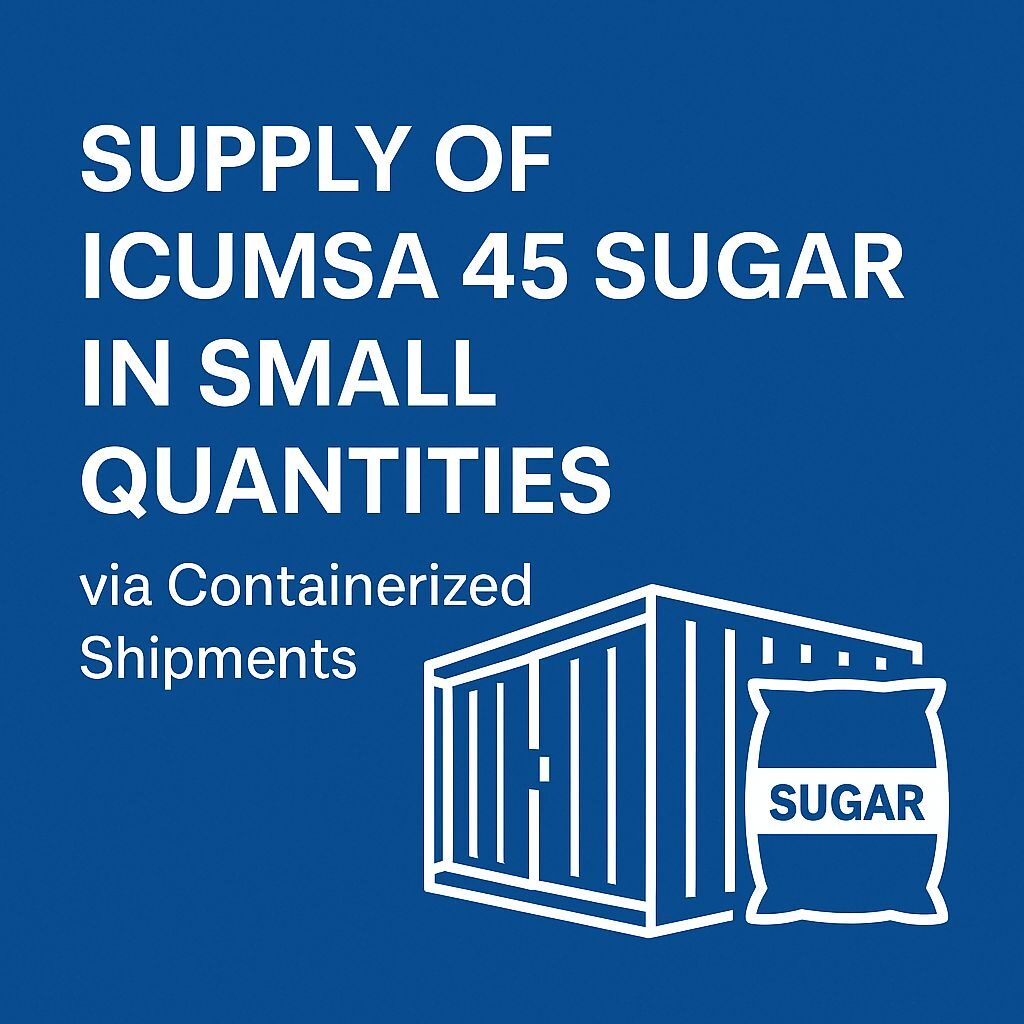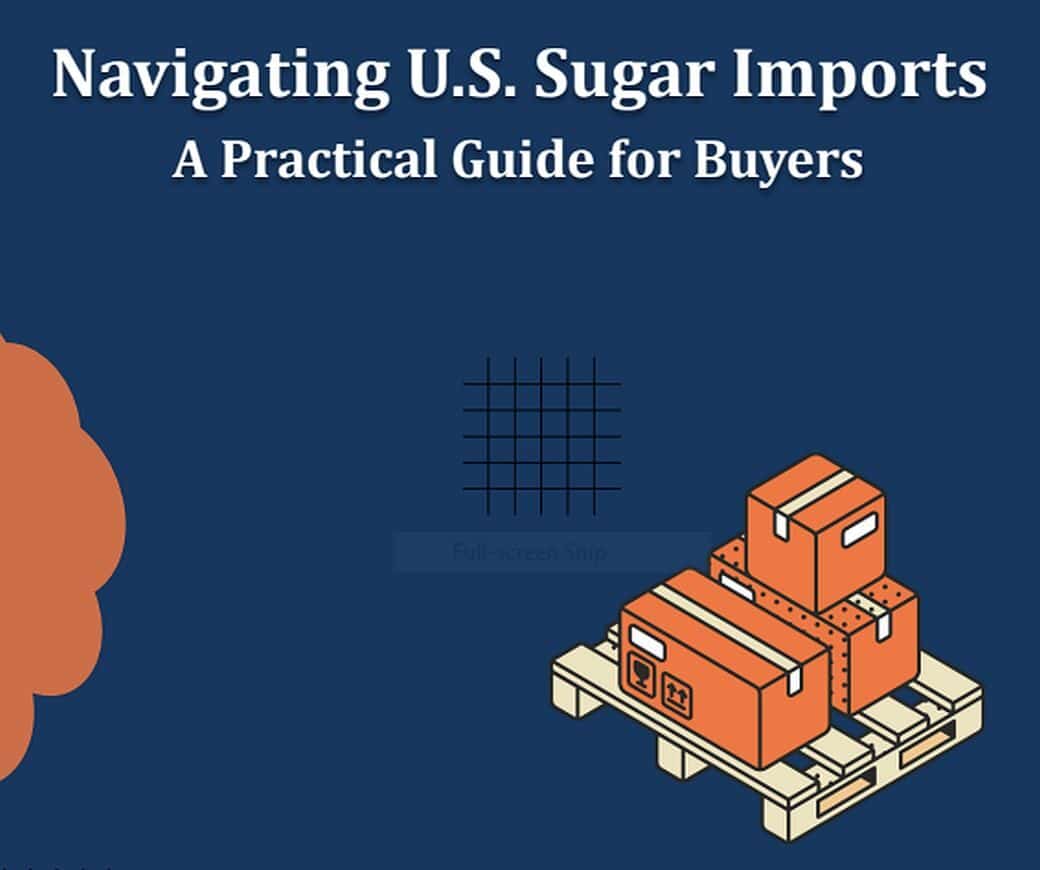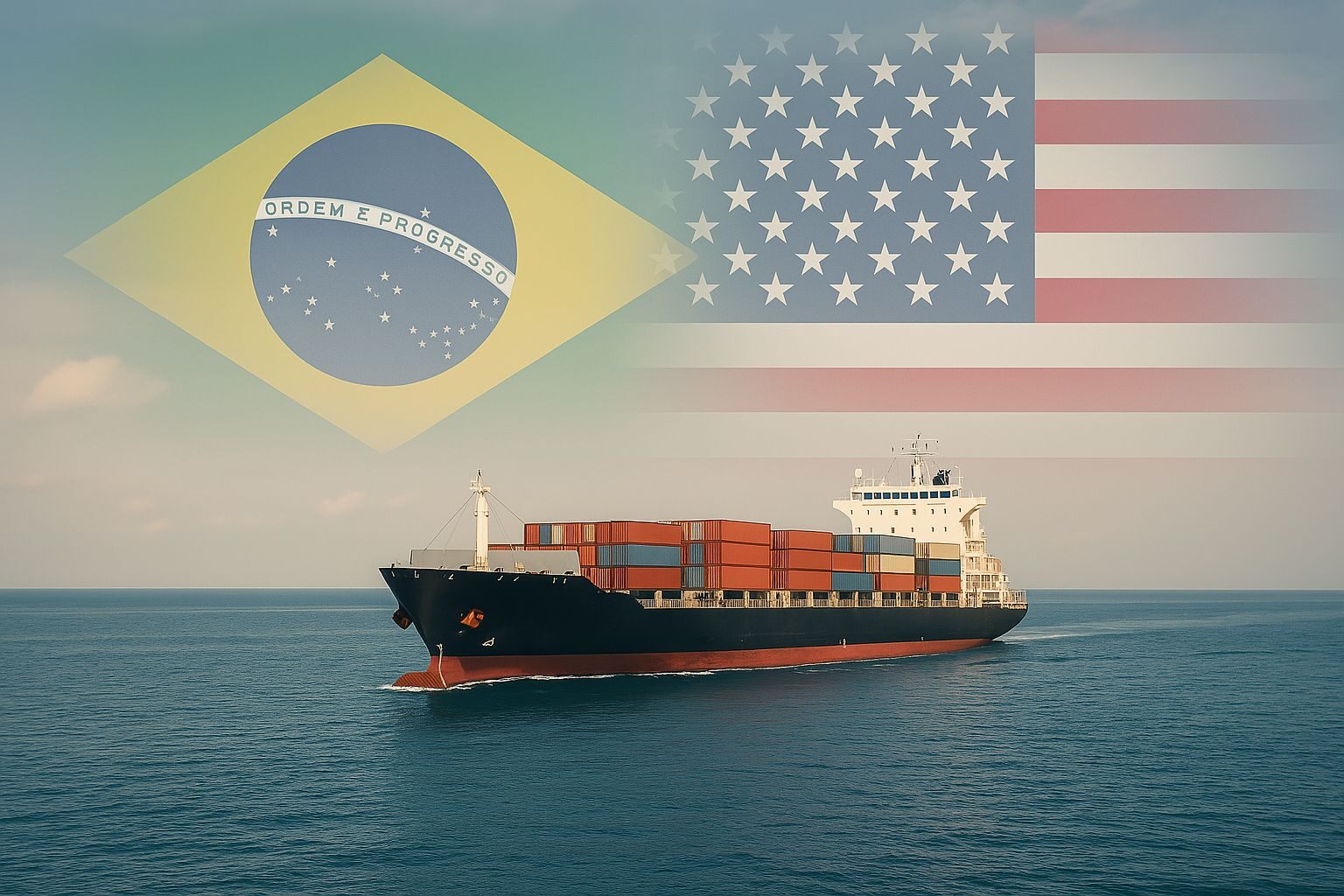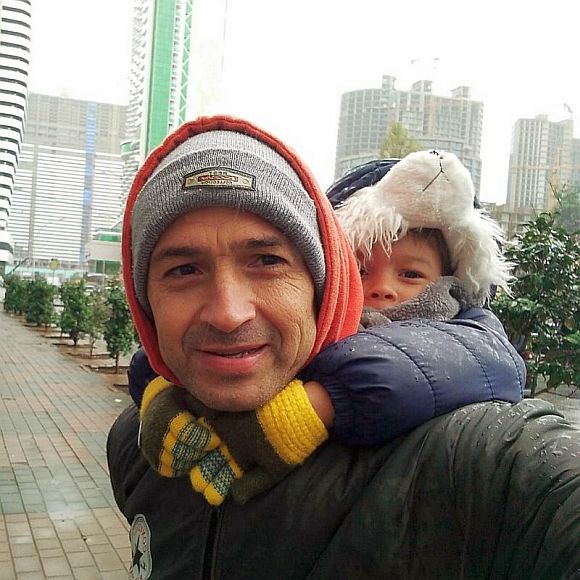Brazil’s Sugar Industry: Global Leader and Innovator
Brazil continues to dominate the global sugar scene in 2024, sweetening international markets with its unparalleled production and export capabilities. This South American powerhouse isn’t just dabbling in sugar – it’s redefining the entire industry.
According to the latest data from CONAB (Brazil’s National Supply Company), Brazil produced a staggering 41.1 million tons of sugar in the 2023/24 harvest season, representing a 15% increase from the previous year. This surge in production has further cemented Brazil’s position as the world’s leading sugar exporter, accounting for nearly 50% of global sugar trade.
But what’s the secret ingredient in Brazil’s recipe for success? Let’s dive into the rich, complex world of Brazilian sugar, exploring how this nation has managed to stay ahead in an increasingly competitive global market.
The Sweet Spot: Brazil’s Market Dominance
Brazil’s sugar industry is like a well-oiled machine, or should we say, a well-crushed cane? The country’s vast agricultural resources, coupled with decades of technological innovation, have created a sugar production powerhouse that’s hard to beat.
“Brazil’s sugar industry is not just about volume; it’s about efficiency and adaptability,” says Dr. Maria Silva, an agricultural economist at the University of São Paulo. “We’ve perfected the art of producing sugar at scale while remaining nimble enough to respond to global market shifts.”
Key Players and Market Structure
The Brazilian sugar landscape is a mix of giants and smaller players, creating a dynamic and competitive environment. Here’s a snapshot of the industry structure:
– Major Players: Companies like Raízen, Biosev, and Tereos lead the pack, controlling significant portions of production and exports.
– Geographic Concentration: São Paulo state remains the heart of sugar production, accounting for over 60% of the country’s output.
– Semi-Vertical Integration: About 60% of sugarcane production is directly controlled by sugar factories, blurring the lines between growers and processors.
This structure allows for strategic decision-making that can influence global sugar prices and trade flows. It’s not quite a monopoly, but it’s definitely a sweet spot between concentration and competition.
Technological Edge: The Not-So-Secret Weapon
Brazil’s sugar industry isn’t stuck in the past – it’s embracing the future with open arms. From precision agriculture to advanced milling processes, technology is the backbone of Brazil’s competitive advantage.
– Precision Agriculture: GPS-guided planting and harvesting, along with drone-based crop monitoring, are optimizing sugarcane yields.
– Genetic Engineering: Development of drought-resistant and high-yield sugarcane varieties is enhancing productivity.
– Automated Harvesting: Mechanized harvesting is reducing labor costs and increasing efficiency.
– Big Data Analytics: Data-driven decision-making in planting, harvesting, and processing is improving overall efficiency.
“The integration of AI and IoT in our sugar production processes has been a game-changer,” notes Carlos Mendes, CTO of a leading Brazilian sugar company. “We’re not just producing more sugar; we’re producing smarter.”
Sustainability: The New Frontier
In an era where sustainability is no longer optional, Brazil’s sugar industry is stepping up to the plate. The country is increasingly focusing on environmentally friendly practices, aiming to sweeten the deal for eco-conscious markets.
– Renewable Energy: Many sugar mills are now energy self-sufficient, using bagasse (sugarcane residue) for power generation.
– Water Conservation: Advanced irrigation techniques are reducing water usage in sugarcane cultivation.
– Carbon Footprint Reduction: Efforts to minimize greenhouse gas emissions throughout the production process are ongoing.
These initiatives not only appeal to environmentally conscious consumers but also help secure Brazil’s long-term position in the global market.
Navigating Global Challenges
Despite its strong position, Brazil’s sugar industry isn’t without its challenges. From climate change to shifting consumer preferences, the industry is constantly adapting to new realities.
Climate Change Impact: Increasing frequency of droughts and extreme weather events affects sugarcane production. In 2021, a severe drought led to a 6% decrease in sugarcane production, highlighting the need for climate-resilient strategies.
Market Volatility: Fluctuating global sugar prices create uncertainty in revenue projections. To mitigate this, many Brazilian exporters use sophisticated financial instruments for hedging.
Changing Consumer Preferences: With growing health consciousness, some markets are seeing reduced sugar consumption. Brazil is responding by diversifying into low-calorie and natural sweetener alternatives.
Trade Barriers: Protectionist policies in some importing countries can restrict market access. Brazil actively participates in global trade negotiations to secure favorable terms for sugar exports.
The Future Outlook: Sweet Prospects Ahead
Looking ahead, the future of Brazil’s sugar industry appears promising, albeit with some challenges to navigate.
– Growing Global Demand: Increasing population and rising incomes in developing countries are expected to drive sugar consumption.
– Market Diversification: Expansion into new markets, particularly in Asia and Africa, offers growth potential.
– Technological Innovation: Continued advancements in production and processing technologies are likely to enhance Brazil’s competitive edge.
– Sustainability Focus: Brazil’s efforts in sustainable sugar production may provide a market advantage as environmental concerns grow globally.
“The key to Brazil’s future success in the global sugar market lies in our ability to balance efficiency, sustainability, and market responsiveness,” concludes Dr. Silva. “It’s a complex equation, but one that Brazil is well-equipped to solve.”
As we wrap up our journey through Brazil’s sugar industry, one thing is clear: this South American giant isn’t just participating in the global sugar market – it’s leading it. With a blend of natural advantages, technological innovation, and strategic adaptability, Brazil’s sugar industry is poised to continue its sweet success story in the years to come.
Whether you’re an investor eyeing opportunities in agricultural commodities, a policymaker shaping international trade agreements, or simply a curious observer of global economic trends, Brazil’s sugar saga offers valuable insights into the dynamics of modern agricultural industries in an increasingly interconnected world.
FAQs: Insights into Brazil’s Sugar Export Strategies
What are the main factors affecting Brazil’s sugar export prices?
Brazil’s sugar export prices are influenced by a complex interplay of factors, reflecting the industry’s global nature and sensitivity to various economic and environmental conditions. Key factors include:
– Global Supply and Demand: As the world’s largest sugar exporter, Brazil’s production levels significantly impact global supply, directly affecting prices.
– Weather Conditions: Droughts or excessive rainfall in Brazil can affect sugarcane yields, influencing export volumes and prices.
– Currency Exchange Rates: Fluctuations in the Brazilian Real against major currencies, especially the US Dollar, can significantly impact export prices and competitiveness.
– Oil Prices: Given Brazil’s dual production of sugar and ethanol, oil prices influence the allocation of sugarcane to either product, affecting sugar supply and prices.
– International Trade Policies: Tariffs, quotas, and subsidies in importing countries can affect the competitiveness of Brazilian sugar in global markets.
– Production Costs: Changes in labor, energy, and transportation costs in Brazil can influence export prices.
– Speculative Activity: Futures trading and speculation in sugar markets can cause short-term price fluctuations.
Understanding these pricing dynamics is crucial for exporters, importers, and policymakers alike, as they navigate the volatile global sugar market.
How do government policies impact sugar exports from Brazil?
Government policies play a significant role in shaping Brazil’s sugar export landscape:
– Subsidy Programs: Initiatives like Plano Safra provide subsidized credit for agricultural investments, enhancing production efficiency and export competitiveness.
– Tax Incentives: Various tax breaks and exemptions for sugar producers lower operational costs, making exports more competitive.
– Ethanol Policies: Mandates on ethanol blending in gasoline indirectly affect sugar production and export volumes.
– Export Promotion: Government-led trade missions and diplomatic efforts help open new markets for Brazilian sugar.
– Infrastructure Investments: Public investments in ports and transportation networks improve logistics, reducing export costs.
– Research and Development Support: Government funding for agricultural research leads to improved sugarcane varieties and production methods.
These policies collectively strengthen Brazil’s position in the global sugar market, though they must be balanced against international trade regulations and agreements.
What role does technology play in Brazil’s sugar industry?
Technology is a cornerstone of Brazil’s sugar industry success:
– Precision Agriculture: GPS-guided planting and harvesting, along with drone-based crop monitoring, optimize sugarcane yields.
– Genetic Engineering: Development of drought-resistant and high-yield sugarcane varieties enhances productivity.
– Automated Harvesting: Mechanized harvesting reduces labor costs and increases efficiency.
– Advanced Milling Technology: Modern sugar mills maximize sugar extraction and reduce waste.
– Big Data Analytics: Data-driven decision-making in planting, harvesting, and processing improves overall efficiency.
– Blockchain Implementation: Enhancing supply chain transparency and traceability for international buyers.
– Satellite Imaging: Used for crop health assessment and yield prediction, aiding in production planning.
These technological advancements have significantly boosted productivity, allowing Brazil to maintain its competitive edge in the global sugar market.
How does Brazil manage competition in the global sugar market?
Brazil employs several strategies to manage international competition:
– Cost Leadership: Maintaining low production costs through efficient farming practices and technological innovation.
– Quality Control: Ensuring high-quality sugar production to differentiate from competitors.
– Market Diversification: Expanding into new markets to reduce dependence on any single importer.
– Flexible Production: Ability to switch between sugar and ethanol production based on market conditions.
– Strategic Partnerships: Forming alliances with international distributors and refiners.
– Sustainability Initiatives: Implementing environmentally friendly practices to appeal to eco-conscious markets.
– Trade Negotiations: Actively participating in global trade talks to secure favorable terms for sugar exports.
These strategies help Brazil maintain its position as the world’s leading sugar exporter despite increasing global competition.
What are the key challenges faced by Brazilian sugar exporters?
Brazilian sugar exporters face several significant challenges:
– Market Volatility: Fluctuating global sugar prices create uncertainty in revenue projections.
– Currency Risks: Volatility in the Brazilian Real affects export profitability.
– Logistical Constraints: Infrastructure limitations, particularly in transportation and port capacity, can hinder efficient exports.
– Trade Barriers: Protectionist policies in importing countries, including tariffs and quotas, restrict market access.
– Climate Change: Increasing frequency of droughts and extreme weather events affects sugarcane production.
– Competition: Rising production efficiency in other sugar-exporting countries intensifies global competition.
– Changing Consumer Preferences: Growing health consciousness in some markets leads to reduced sugar consumption.
– Regulatory Compliance: Meeting varying international standards and regulations across different export markets.
Addressing these challenges requires ongoing adaptation and strategic planning by Brazilian sugar exporters.
How does currency fluctuation affect Brazilian sugar exports?
Currency fluctuations significantly impact Brazilian sugar exports:
– Profitability: A stronger Brazilian Real reduces profit margins for exporters, while a weaker Real enhances competitiveness.
– Pricing Strategy: Exchange rate volatility complicates long-term pricing agreements with international buyers.
– Investment Decisions: Currency trends influence decisions on capital investments in production and export infrastructure.
– Market Access: Extreme currency movements can price Brazilian sugar out of certain markets or make it exceptionally competitive.
– Hedging Costs: The need for currency hedging to mitigate exchange rate risks adds to operational costs.
For example, a 10% appreciation in the Real against the US Dollar can potentially reduce profit margins by 5-7%, highlighting the critical impact of currency movements on export profitability.
What is the future outlook for Brazil’s sugar export market?
The future outlook for Brazil’s sugar export market is cautiously optimistic:
– Growing Global Demand: Increasing population and rising incomes in developing countries are expected to drive sugar consumption.
– Technological Advancements: Continued innovation in production and processing is likely to enhance Brazil’s competitive edge.
– Sustainability Focus: Brazil’s efforts in sustainable sugar production may provide a market advantage as environmental concerns grow.
– Market Diversification: Expansion into new markets, particularly in Asia and Africa, offers growth potential.
– Trade Agreements: Ongoing negotiations for new trade deals could open up additional export opportunities.
– Challenges: Climate change impacts and potential shifts in global dietary preferences towards lower sugar consumption pose risks.
Economic forecasts suggest steady growth in Brazil’s sugar exports, though success will depend on adaptability to changing market conditions and environmental factors.
How do trade agreements benefit Brazil’s sugar industry?
Trade agreements significantly benefit Brazil’s sugar industry:
– Market Access: Agreements reduce or eliminate tariffs, making Brazilian sugar more competitive in partner countries.
– Volume Growth: Preferential access often leads to increased export volumes to agreement partners.
– Diversification: Trade deals help diversify export destinations, reducing reliance on any single market.
– Stability: Long-term agreements provide a stable framework for trade, reducing policy-related uncertainties.
– Investment Attraction: Improved market access can attract foreign investment in Brazil’s sugar industry.
– Dispute Resolution: Trade agreements often include mechanisms for resolving trade disputes, protecting exporters’ interests.
For example, the Mercosur-EU trade agreement, when fully implemented, is expected to boost Brazil’s sugar exports to European markets significantly.
What are the main export destinations for Brazilian sugar?
Brazil’s main sugar export destinations include:
– China: The largest importer of Brazilian sugar, driven by growing consumption in food and beverage industries.
– India: Despite being a major producer, India imports Brazilian sugar during production shortfalls.
– Indonesia: A key market in Southeast Asia with growing sugar demand.
– Algeria: An important destination in North Africa, particularly for raw sugar.
– United Arab Emirates: A significant market in the Middle East, often serving as a re-export hub.
– Bangladesh: Emerging as a major importer due to rising domestic consumption.
– Nigeria: A growing market in Africa with increasing demand for refined sugar.
These markets represent a mix of established and emerging destinations, reflecting Brazil’s strategy of market diversification.
How do microeconomic factors influence Brazil’s sugar production costs?
Microeconomic factors significantly influence Brazil’s sugar production costs:
– Labor Costs: Wages and labor productivity directly impact production expenses.
– Energy Prices: Costs of fuel for machinery and processing affect overall production costs.
– Land Prices: Fluctuations in land values influence the cost of expanding or maintaining sugarcane plantations.
– Technology Adoption: Investments in new technologies can initially increase costs but lead to long-term efficiency gains.
– Scale Economies: Larger operations often benefit from lower per-unit costs due to economies of scale.
– Input Prices: Costs of fertilizers, pesticides, and other agricultural inputs affect overall production expenses.
– Transportation Costs: Expenses related to moving sugar from mills to ports impact the final export cost.
– Water Availability: Access to water resources affects irrigation costs and overall productivity.
Understanding these microeconomic influences is crucial for maintaining Brazil’s cost competitiveness in the global sugar market. Producers continually seek to optimize these factors to enhance their competitive position in international markets.

